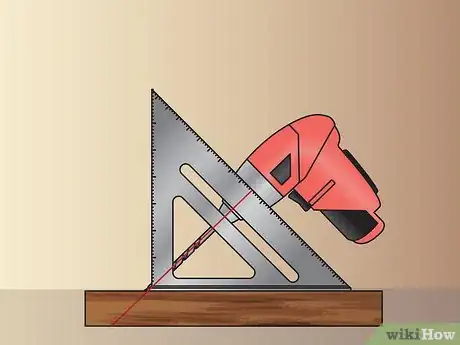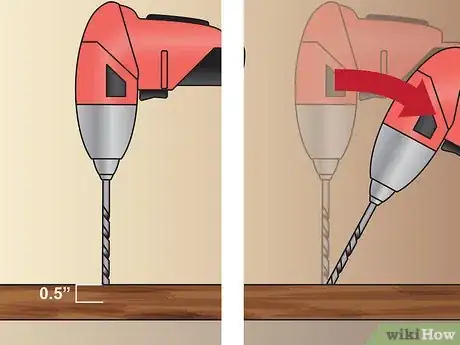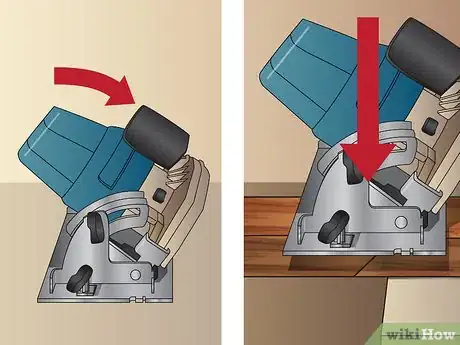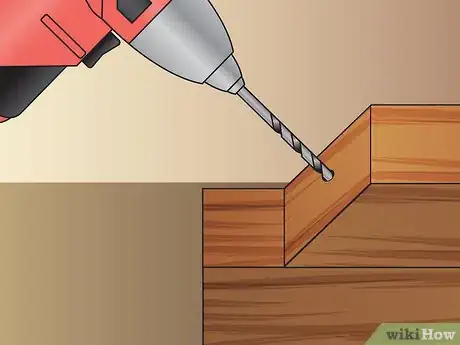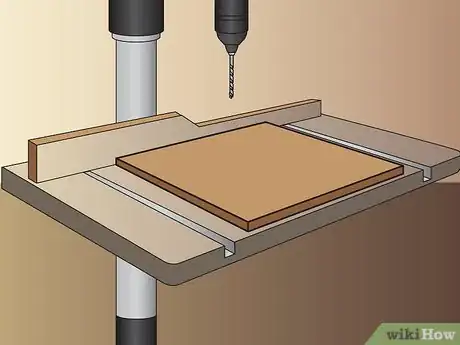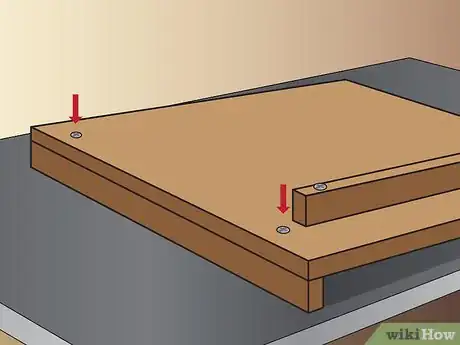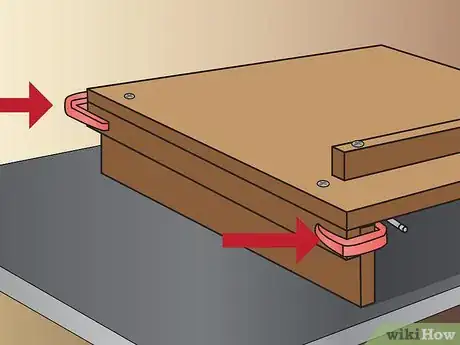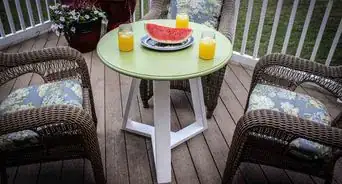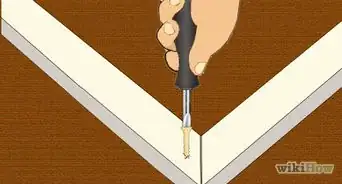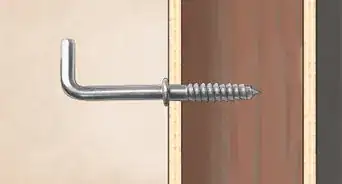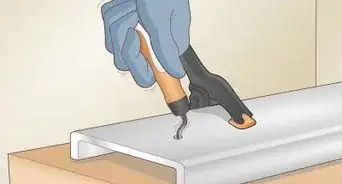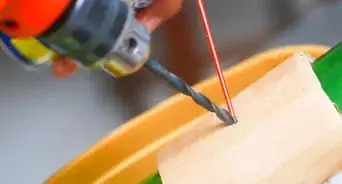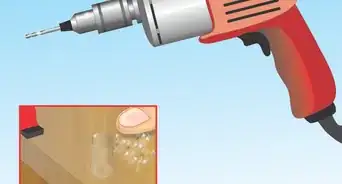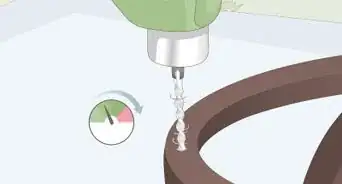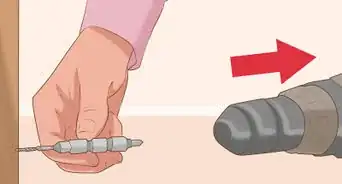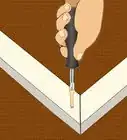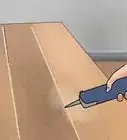This article was co-authored by Ryaan Tuttle. Ryaan Tuttle is a Home Improvement Specialist and the CEO of Best Handyman, Inc. in Boston, Massachusetts. With over 17 years of experience, he specializes in building home service businesses, focusing on creating scalable and efficient brands. With the help of his global team, the companies have achieved over 10+ million in sales and received recognition through magazine features, and enjoy partnerships with wikiHow and Jobber field service software. Boston Magazine and LocalBest.com have named Best Handyman Boston the Best Handyman in Boston. Ryaan holds Construction Supervisor and Home Improvement Contractor Licenses.
There are 7 references cited in this article, which can be found at the bottom of the page.
This article has been viewed 78,780 times.
Drilling at an angle can seem difficult, but don't worry, there's several methods you can use to create angled holes. You can try some basic tricks if you don't need your angles to be too exact. Otherwise, try building an angled jig with a piece of wood for your hand drill, or creating an angled jig that fits onto the plate of your drill press.
Steps
Using Basic Tricks for Imprecise Angles
-
1Use a speed square to gauge your angle for quick drill jobs. A speed square is a right-triangle shaped tool that has angles marked along the hypotenuse (the long side). Use the angles on the edge to guide your drilling.[1]
- Set the speed square right next to the hole you're drilling. Line up the drill so the top is along the flat side of the speed square. It will almost look like you're drilling into the right angle.
- Line up the angle markings on the hypotenuse with the center line down the top of the drill. Drill down into the wood at that angle.
-
2Cut a guide from scrap wood to keep the same angle for several holes. Measure the angle you need on a flat piece of scrap wood that's at least 1 inch (2.5 cm) thick. Cut the wood at that angle using a hand saw or radial saw.[2]
- To cut the wood at an angle, mark the angle along the edge. Use a handsaw to go along that angle. If you're using a radial saw, set it to the angle you need before cutting.
- Set the wood down where you need to drill. Lay the drill along the angle, and use the wood to guide the drill while pushing into the wood.
- Make sure to hold on tight to the guiding piece of wood while drilling.
Advertisement -
3Start with pilot holes to create angled pocket holes. Another option is to drill straight down into the wood to create small pilot holes. You only need to go down about 0.5 inches (1.3 cm). Pull the drill out. Start drilling again with the drill angled straight down into the pilot holes you've created, and then tilt it to the angle you need as you go in the hole.[3]
- It helps to start with a smaller drill bit before switching to a larger drill bit to finish the larger part of the hole.
- Pocket holes are what you use to connect 2 pieces of wood at an angle. The angle doesn't need to be precise, so you don't need to measure it. Aim for about a 45° angle, and you should be fine.
- This method helps keep the drill bit from breaking.
Employing an Angled Jig
-
1Create your own angled jig with a piece of wood. Make this tool using a radial saw and a scrap piece of wood. Use a radial saw and set it to the angle of the hole that you need to drill into your wood. For example, if you need it set to 30 degrees, then set the radial saw to 30 degrees.
- "Jig" literally just means something that holds your work or guides your tools.
- Use your radial saw to cut the wood at an angle.
-
2Add a pilot hole to the angled jig by drilling into the angled edge. Drill into the angled part of the wood so that the drill is perpendicular to the wood. This will create the perfect angle for drilling into other pieces of wood.[4]
- Drill all the way through the wood to make the pilot hole.
-
3Position the wood on your workbench to drill. Place the piece of wood that you need to drill into on your workbench. Put the angled jig over the flat piece. You should see the pilot hole you drilled in the angled part. Clamp the jig into place on top of the other piece of wood.[5]
- If the jig isn't flat along the top, you can saw off the top edge to make it flat. Then you'll be able to clamp it to the other piece of wood.
-
4Drill through the jig into the wood below to create holes in your project. Next, place the drill bit through the pilot hole. Start drilling, using the pilot hole as a guide. Push down into the piece underneath, creating an angled hole.[6]
- Once you know how deep you want to go for each pilot hole you're creating in your project, apply a stop collar to the drill to keep yourself from going deeper. The stop collar goes over the drill bit at the place you want to stop. A stop collar is a little metal ring that you can buy at any home improvement store.
- Move the jig around to each spot you need to drill a hole.
Creating an Angled Jig for a Drill Press
-
1Cut a piece of plywood to fit your drill press plate. Use a table saw to cut the piece down to size, making it perfectly rectangular. It should fit easily on top of your drill press plate, though keep it mind you will angle it up towards the drill. You can trace the drill press plate to get an idea for the size you'll need.[7]
- You can use scrap plywood for this project, but it should be sturdy enough so that it doesn't bend when you're drilling down towards it.
-
2Add a fence to the front of the piece of plywood. Screw a small piece of wood onto the front of the plywood. The front is whatever part will be facing up on the drill press plate. The wood should be almost the length of the plywood and 0.5 to 1 in (1.3 to 2.5 cm) thick. When looking at the plywood as you face the drill press, this piece should run from top to bottom 2 to 3 inches (5.1 to 7.6 cm) from the left edge.[8]
- Some fences also run from left to right 2 to 3 inches (5.1 to 7.6 cm) from the bottom instead.
- A fence helps you keep your project in place.
-
3Screw a piece of wood to the back of the plywood to create the angle. The bracing piece of wood should be 1 in (2.5 cm) wide or so, but the height of the wood to the press plate will be determined by the angle you want. Measure the angle, and cut the piece of wood so that it will prop the plywood up to that angle.[9]
- For instance, if you want a 45° angle, the piece you cut for the back would need to be taller than if you wanted a 30° angle.
- Screw down from the front part of the plywood into the back brace. Use at least 1 screw on each end to hold it in place.
-
4Brace the jig against a piece of clamped wood. Clamp a long piece of wood to the back of the drill press plate. Attach c-clamps on each end. Now you can push the jig up against this piece of wood so it doesn't slide around.[10]
-
5Drill your holes into your project. Place your project piece on the jig up against the fence. Bring the drill down and drill holes into the piece where you need them. If your piece is moving around too much, clamp it into place against the fence.[11]
- Now you can drill the same angle each time with precision.[12]
-
6Adjust the jig as needed. You don't need to make a new jig for each angle you need. Rather, just add an extra piece of wood to the back brace to extend the length. Overlap the 2 pieces of wood, and tightly clamp them into place on each end.[13]
- Measure to see if you have the angle you need by placing a speed square alongside it. If you don't have the correct angle, unclamp the extra piece of wood. Adjust the wood and clamp it back into place.
Warnings
- Remember to protect yourself when using power tools by wearing goggles, keeping loose clothing out of the way, and staying alert.⧼thumbs_response⧽
References
- ↑ http://www.aconcordcarpenter.com/drill-precise-angle-screw.html
- ↑ http://www.aconcordcarpenter.com/drill-precise-angle-screw.html
- ↑ http://www.aconcordcarpenter.com/drill-precise-angle-screw.html
- ↑ http://www.woodworkingtips.com/etips/etip030418wb.html
- ↑ http://www.woodworkingtips.com/etips/etip030418wb.html
- ↑ http://www.woodworkingtips.com/etips/etip030418wb.html
- ↑ http://www.woodworkersjournal.com/adjustable-angle-drilling-jig/
- ↑ http://www.woodworkersjournal.com/adjustable-angle-drilling-jig/
- ↑ http://www.woodworkersjournal.com/adjustable-angle-drilling-jig/
- ↑ http://www.woodworkersjournal.com/adjustable-angle-drilling-jig/
- ↑ http://www.woodworkersjournal.com/adjustable-angle-drilling-jig/
- ↑ https://www.popularmechanics.com/home/how-to-plans/how-to/a18838/build-an-adjustable-angle-drilling-jig-for-precise-holes-everytime/
- ↑ http://www.woodworkersjournal.com/adjustable-angle-drilling-jig/
About This Article
There are a few basic tricks you can use to drill at an approximate angle. However, if you want a perfect angle, you’ll need to use an angled jig, which is a specialized tool that guides your drill. For a quick alignment, take a right-triangle shaped tool called a speed square and place it next to the hole you’re drilling. Line up the angle markings on the tool and drill down into the wood at that angle. You could also use a piece of scrap wood if you’re drilling at the same angle for several holes. Measure and cut the angle you need on a piece of scrap wood that’s at least 1 inch thick. Use the wood as a guide when you drill. Another option is to drill about ½ inch deep to make a pilot hole. Then, tilt the drill to the angle you need. To learn how to use an angled jig to drill at an angle, keep reading!
